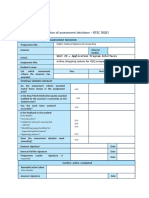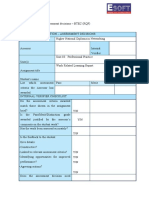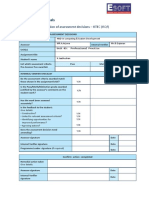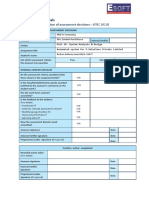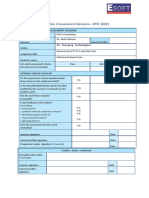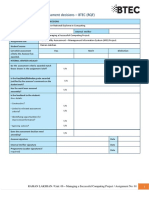0% found this document useful (0 votes)
94 views32 pagesBs Process
The document outlines the internal verification process for assessment decisions related to the BTEC Higher National Diploma in Computing, focusing on Unit 17 - Business Process Support. It includes guidelines for assignment submission, assessment criteria, and feedback mechanisms, emphasizing the importance of data and information in business processes. Additionally, it provides a structured approach for students to analyze and apply data science tools in real-world scenarios, with specific tasks and grading rubrics to guide their work.
Uploaded by
softmuz941Copyright
© © All Rights Reserved
We take content rights seriously. If you suspect this is your content, claim it here.
Available Formats
Download as DOCX, PDF, TXT or read online on Scribd
0% found this document useful (0 votes)
94 views32 pagesBs Process
The document outlines the internal verification process for assessment decisions related to the BTEC Higher National Diploma in Computing, focusing on Unit 17 - Business Process Support. It includes guidelines for assignment submission, assessment criteria, and feedback mechanisms, emphasizing the importance of data and information in business processes. Additionally, it provides a structured approach for students to analyze and apply data science tools in real-world scenarios, with specific tasks and grading rubrics to guide their work.
Uploaded by
softmuz941Copyright
© © All Rights Reserved
We take content rights seriously. If you suspect this is your content, claim it here.
Available Formats
Download as DOCX, PDF, TXT or read online on Scribd
/ 32



































